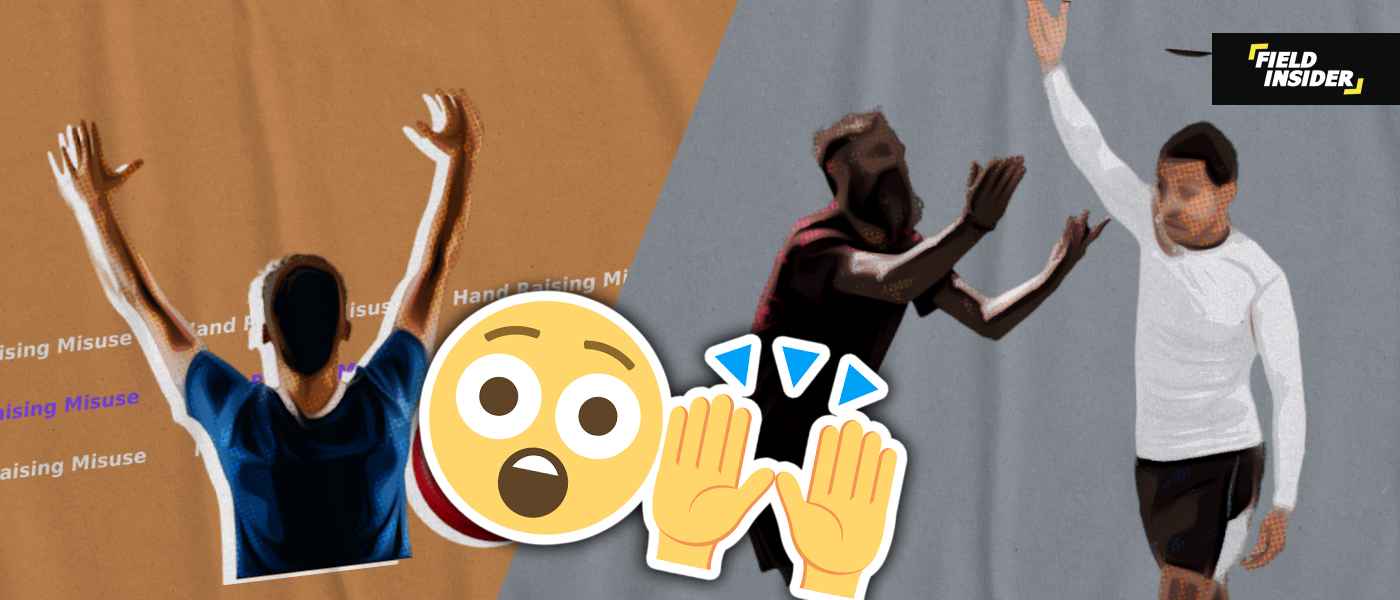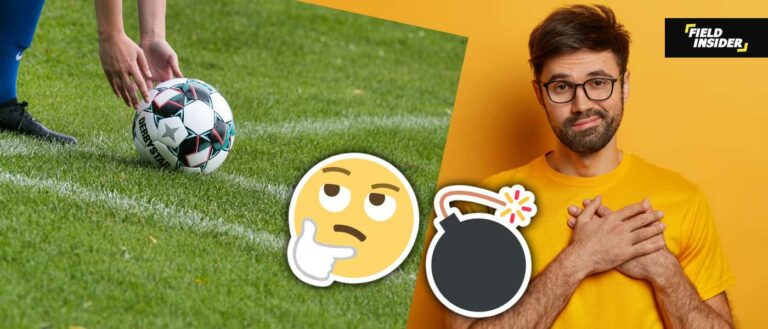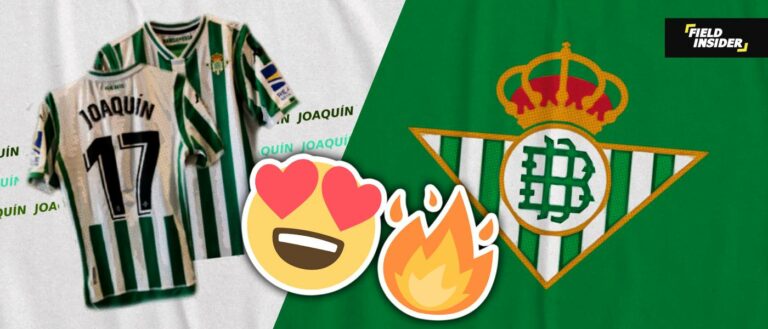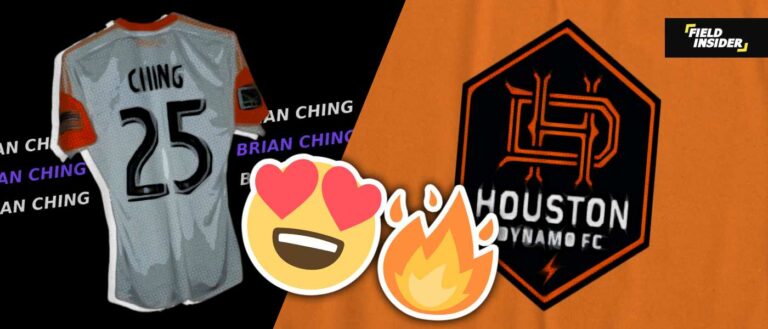Why Do Footballers Put Their Hands Up? Decoding Signals
Football is not just a game of physical prowess; it’s a strategic ballet, and hand signals are the silent language of this dance.
These non-verbal cues are crucial in a sport where noise from the crowd and distance between players make verbal communication challenging.
Understanding these signals offers a new perspective on the game, revealing a layer of tactical depth that is often invisible to the casual observer.
Therefore, in this article, we will look at the different scenarios in which footballers are likely to put their hands up and the meaning of each of these instances.
Key Takeaways
| Aspects | Description |
|---|---|
| Understanding Football Signals | Uncover the hidden language of hand signals in football |
| Defensive Coordination | Defenders use signals to organize strategies like offside traps and man-marking, which are crucial for team defense. |
| Goalkeeper’s Command | Goalkeepers use their unique field view to direct the defense, playing a pivotal role in team strategy. |
| Offensive Strategy | Attackers employ gestures for set pieces and formations, enhancing team coordination in offensive plays. |
| Referee Interaction | Players communicate with referees via signals, ensuring clarity and respect in decision-making. |
| Deceptive Tactics With Raising Hands | Manipulative ways raising of hands are used in football |
| Psychological Impact | The right signal at the right time can psychologically influence opponents and boost team morale. |
Understanding Soccer Signals
A key essence that must be maintained during soccer games is communication, both between players and their coaches on the sidelines.
Communication can be done in several ways, by verbal and non-verbal means.
However, in a community such as soccer, where all verbal phrases get lost in the chants and murmuring of spectators, a hand gesture or sign as simple as waving helps to get a lot across.
This can mean a lot to another player on the same team as the one who made it. When making hand gestures, players are allowed to put their hands up, so they can be seen from afar.
Defensive Strategies
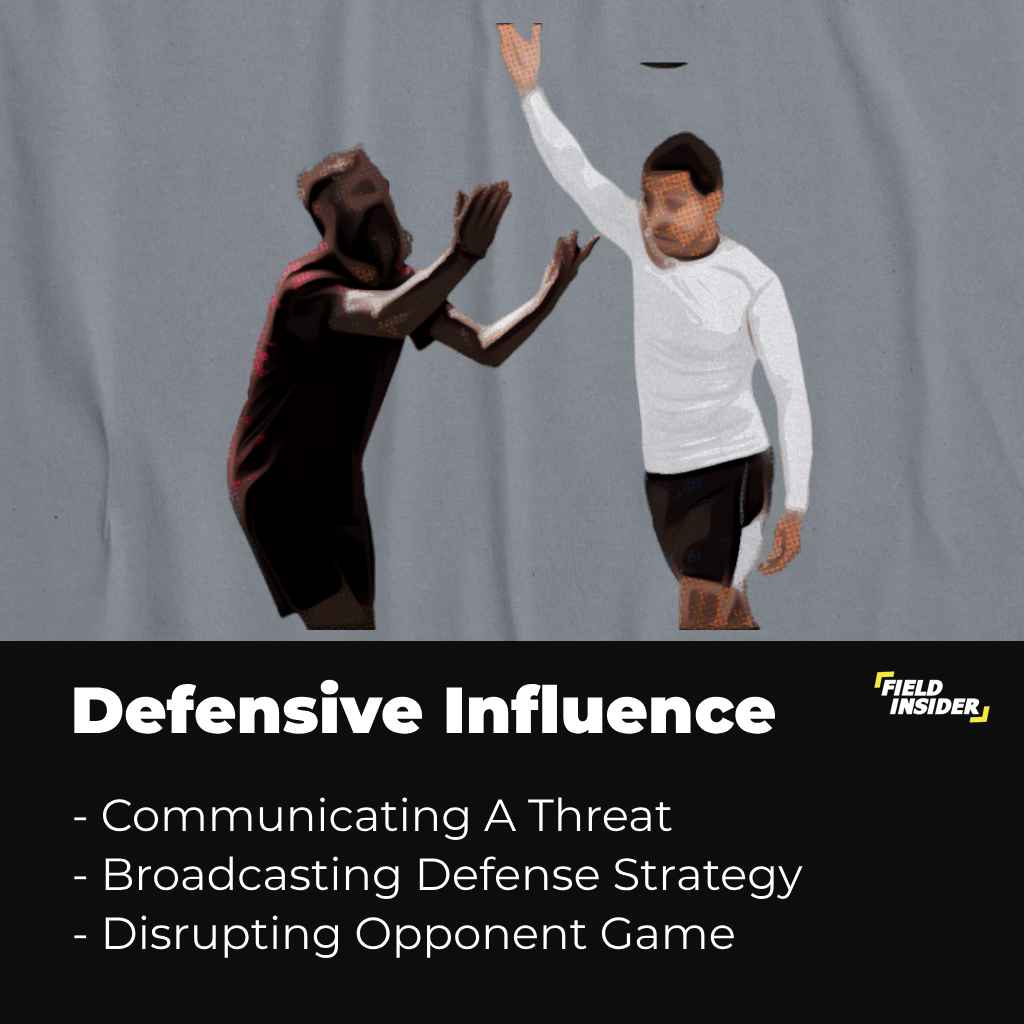
When soccer players put their hands in the air, it can be as a means to foil the offensive strategy of their opponent.
This can be seen in raising their hands up to tell their teammates to move towards the defensive zone, while communicating a threat or opening in their defense, or even sending across defensive formations.
All this might not be heard if voiced verbally. Also, the verbal communication of defensive plans is conspicuous, therefore, they can become void if the opposing team identifies and adjusts their offensive strategy to annul it.
Goalkeeper’s Command: Pointing Out Defensive Vulnerabilities
Aside from putting up their hands to make saves, goalkeepers also put them up to arrange and organize the defensive wall of defenders. Moreso, they create awareness about imminent threats or openings in the defensive layout.
This role is one of the unsaid roles of goalkeepers in football as they are often the orchestrators of the team’s defense, giving commands and suggesting formations.
A popular demonstration of goalkeepers putting up their hands to point out where defenders should line up during corner kicks and free kicks.
Offensive Coordination
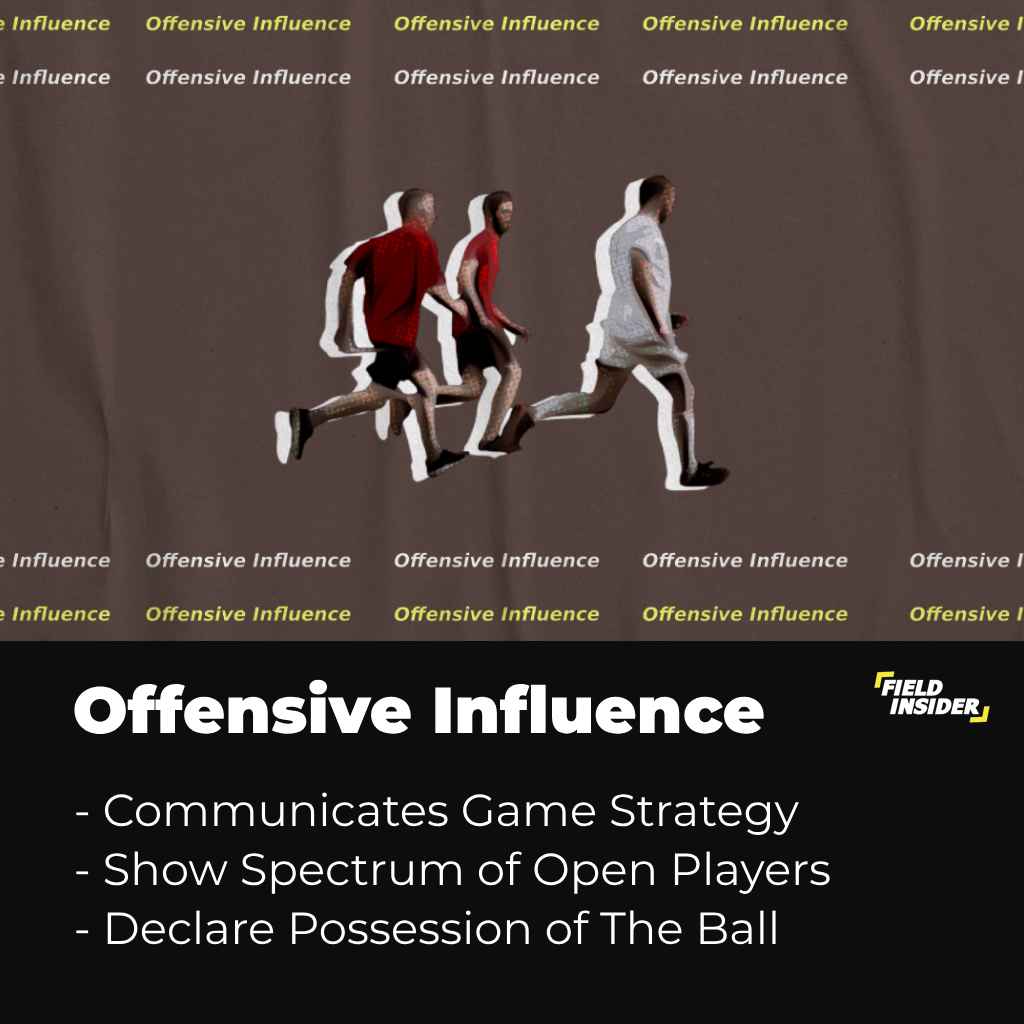
Just as in defensive games where hand raising is primarily for communication, offensive games follow and utilize the same application.
When a player wants to show he is open on the field for the ball, they tend to raise and wave their hands, especially when their teammate who holds possession is at a distance away.
This simple action indicates the spectrum of available teammates he could send the ball to.
Aside from that, footballers put their hands up to show when they play the ball long or high, preparing their teammates for what could be a header (if in the penalty box), or a chase for the ball.
Why Do Footballers Put Their Hands Up During A Corner Kick?
Fans of soccer know that almost every time a corner is about to the taken, footballers raise their hands.
This is sometimes part of the training of players in their training camps. For the player about to take the corner, it signifies he is about to take it, and for his teammates scattered around the field, it is to tell him of their coordinates.
For the players taking the corner, apart from announcing that he is ready, it is also a way to communicate how he will be playing the corner and where he aims the ball.
All these are so that the kick can lead to a successful scoring attempt.
The Corner Kick that Needed No Hand Gestures
Of course, many corners are performed without the performers’ hands being raised or suggestions being made.
On May 7, 2019, one of the most famous corners in football history occurred during a rematch of the Champions League semi-finals.
Barcelona arrived in England with a 3-0 lead from the first match. Few believed Liverpool could make up the difference and advance to the next round of competition.
The Reds, however, neutralized Barcelona’s advantage with goals from Divock Origi and two from Wijnaldum, and the game devolved into a true drama.
The climax of the drama occurred in the 79th minute when Liverpool was awarded a corner. Trent Alexander Arnold was standing in the corner when a boy collecting balls from the side tossed the ball to him.
Trent wanted to leave the corner spot and let Shaqiri take the corner kick at the time. The boy who threw the ball noticed that the Barcelona players had not yet set up their defense and informed Trent of this.
Trent turned to face the penalty area and noticed Divock Origi himself. He took a corner, and with a simple execution, the Belgian sent Liverpool fans into a tizzy.
Many referred to that assistance as ingenious, and it was the pinnacle of that magical night at Anfield.
Reasons Why Footballers Put Their Hands Up
We have talked about soccer players raising their hands from a defensive and offensive perspective. Now, let us go into the common cases that will warrant you to see footballers raise their hands.

1. Referee Interaction
Part of a sign of respectful communication footballers utilize, is to put up their hands as they relate to soccer officials such as the referee. A renowned scenario it is used is calling the attention of referees.
Whenever soccer players are being treated by their opponents (dragged or pushed) in a way that they believe should have warranted a foul, they put their hands up to call the referee’s attention to what is happening or just happened.
In these moments, you see them throw their hands up and turn toward the referee as they seek a call for a foul. This also happens when they stumble and they want the referee to call a foul in their favor.
2. To Communicate Their Location
The football field is a very large playing surface. And with that large space, soccer players are not able to map out the position of every one of their teammates.
Therefore, to put attention on one’s self, especially when open, footballers put their hands up. What this does is highlight their presence and coordinate within a group of players.
3. Communicate Formations And Tactics
As I said earlier, communication is the key ingredient of a successful team on the field. However, it can’t always be done verbally due to noise, distance, and risk of exposing the plan.
Now, this is where players use their hands, especially when raising it. Just as we talked about raising hands in soccer’s offense and defense, hand-raising, communicates when there is a change in tactics; offense to defense or vice versa, or a change in formation style (4-3-3 to 4-4-2, or 3-4-3 to 5-2-3).
4. Show Innocence
When football players put up their hands to show innocence similar to drawing the attention of the referee. However, soccer players do this to give the act that they had nothing to do with a foul.
This is common as players do not want to be hit with a foul that can affect their team. Especially when they get closer and closer to their side of the field.
Therefore, after a player falls down, you will most likely see the opposing player marking him raising his hands, to show non-involvement in the act. It is eventually up to the referee to decide the verdict.
5. Jubilating And Showing Appreciation
If you have played football, you will know scoring or goal or better still winning a game is something of great pleasure especially if it was a formidable opponent or a critical match-up.
Therefore, when things like this happen, it is often an involuntary action to run, jump, or even throw your hands and the air. This is the same in professional soccer games.
After a specular or amusing goal, putting their hands up is just a way to express themselves.
Next, when soccer players want to show appreciation to their fans, they put up their hands to wave. This is common, especially during the end or beginning of soccer games.
Wrong Ways Raising The Hands Is Used By Footballers
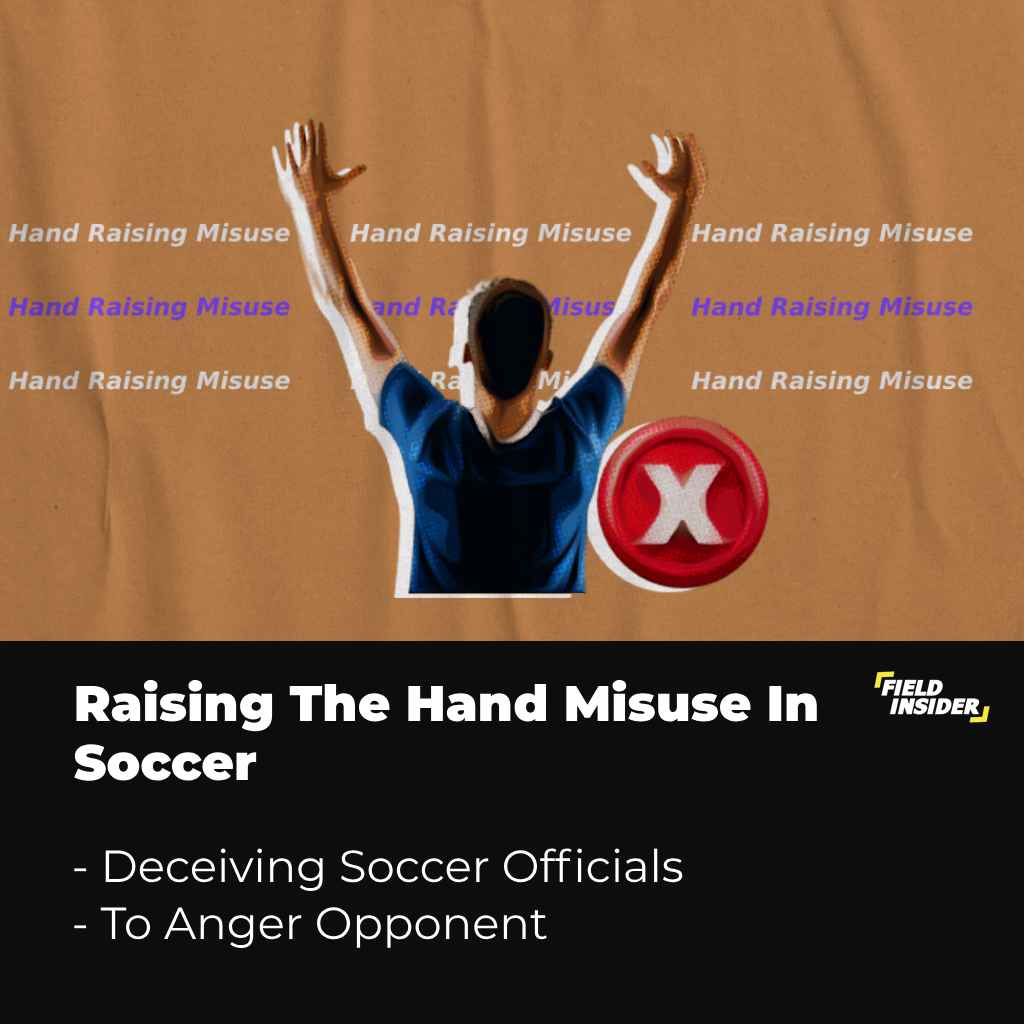
1. Footballers Put Their Hands Up to Deceive Officials
Officials such as referees, do not see every action and foul as they occur. This is because their line of sight can be obstructed by another player ahead of them.
Footballers know this and therefore they put up their hands even when they know they committed a foul in hopes of appearing as not guilty.
However, it’s become an ingrained part of football culture, with players instinctively signaling to influence decisions during the heat of the game.
Moreso, just as it is used to control the judgment of officials into not giving a foul, it is also used to try and manipulate them into giving a foul.
Soccer players desperate for a win are also known to trip at the slightest touch from the opposing team and raise their hands to beckon for some sort of penalty that will favor them.
This is especially common around the penalty box in the final minutes of the match when both sides are drawn.
In other cases, footballers put their hands up during disputes with referees. This is particularly evident when a referee’s decision is disputed; players often collectively raise their hands in protest, signaling their disagreement.
Such reactions, though part of the game’s dynamics, can sometimes escalate to the point where referees respond with disciplinary actions, like issuing yellow or red cards.
2. Footballer Sometimes Put Their Hands Up To Upset Their Opponent
Sometimes in soccer players try to get into the head of their opponent by annoying or irritating them. One of the ways, they do this is by raising there raising there hands in their faces.
This is common after fouls after tension builds up between two teams. This does not show sportsmanship. However, since soccer players also get clouded by their emotions and desire to win, it tends to happen.
Research & Anaylsis
The research titled “The Role of Non-verbal Communication in the Coach-athlete Relationship” was published on Research Gates in 2015.
In this research, a survey was taken to find out the importance of communication, especially in sports training. From the questionnaire given to female athletes, the following data was drawn:
- Communication as indispensable: 93.33%
- Coach-athlete relationship: 60%
- Relationship between athletes: 35%
- External factors (opponents, referees, spectators): 5%

Clearly, it is evident that communication is key in sports training, even soccer training. Moreso, just as it is important in training, it is also crucial in soccer games and matches.
And since non-verbal communication is the best way to pass information and strategies in football games, the same holds true about them.
Does the Action of Footballers Putting Their Hands Have A Future In Soccer?
Footballers put their hands up for many reasons in the game; whichever the reason might be (as stated above), it is still an accepted action in football.
The only moment it becomes a foul is when players, except goalkeepers, raise their hands to hit or stop the ball (handball foul) or hit another player. Therefore, aside from those exceptions, players are not in any way penalized for it.
Now, looking Into the future, it is definite that we will continue to see footballers putting their hands up. Why, because it has become a part of the sport and has come to stay.
Conclusion
This exploration of hand signals in football highlights their crucial role in the game’s tactical and psychological dimensions.
For players and fans alike, understanding these signals enriches the football experience, revealing a deeper layer of strategy and communication.


